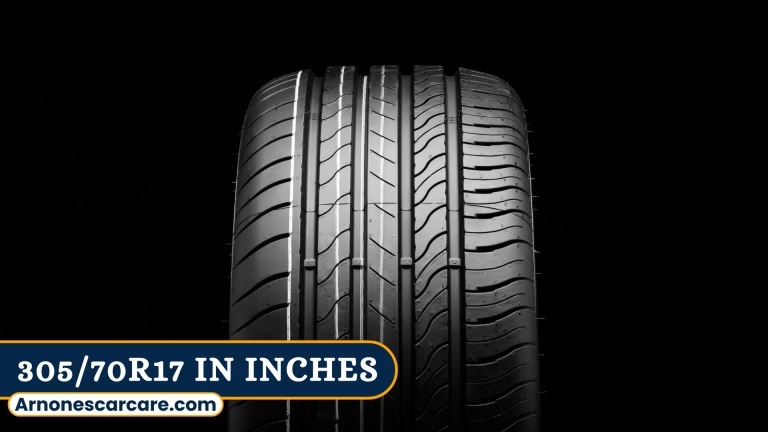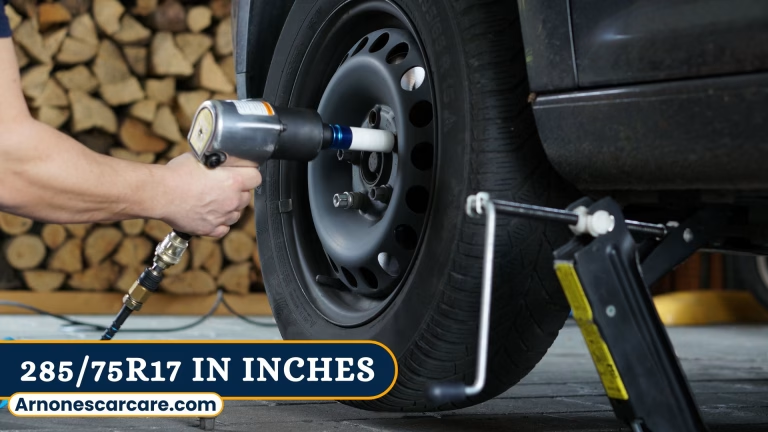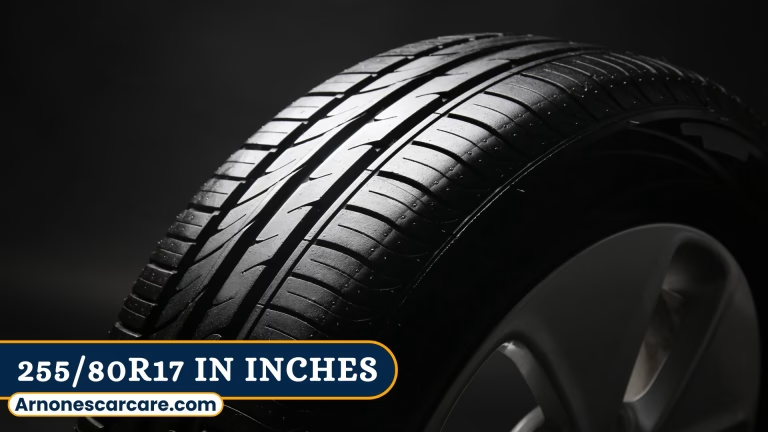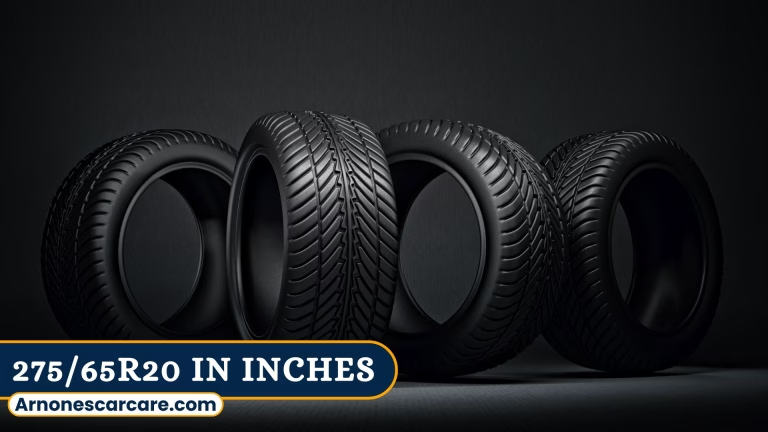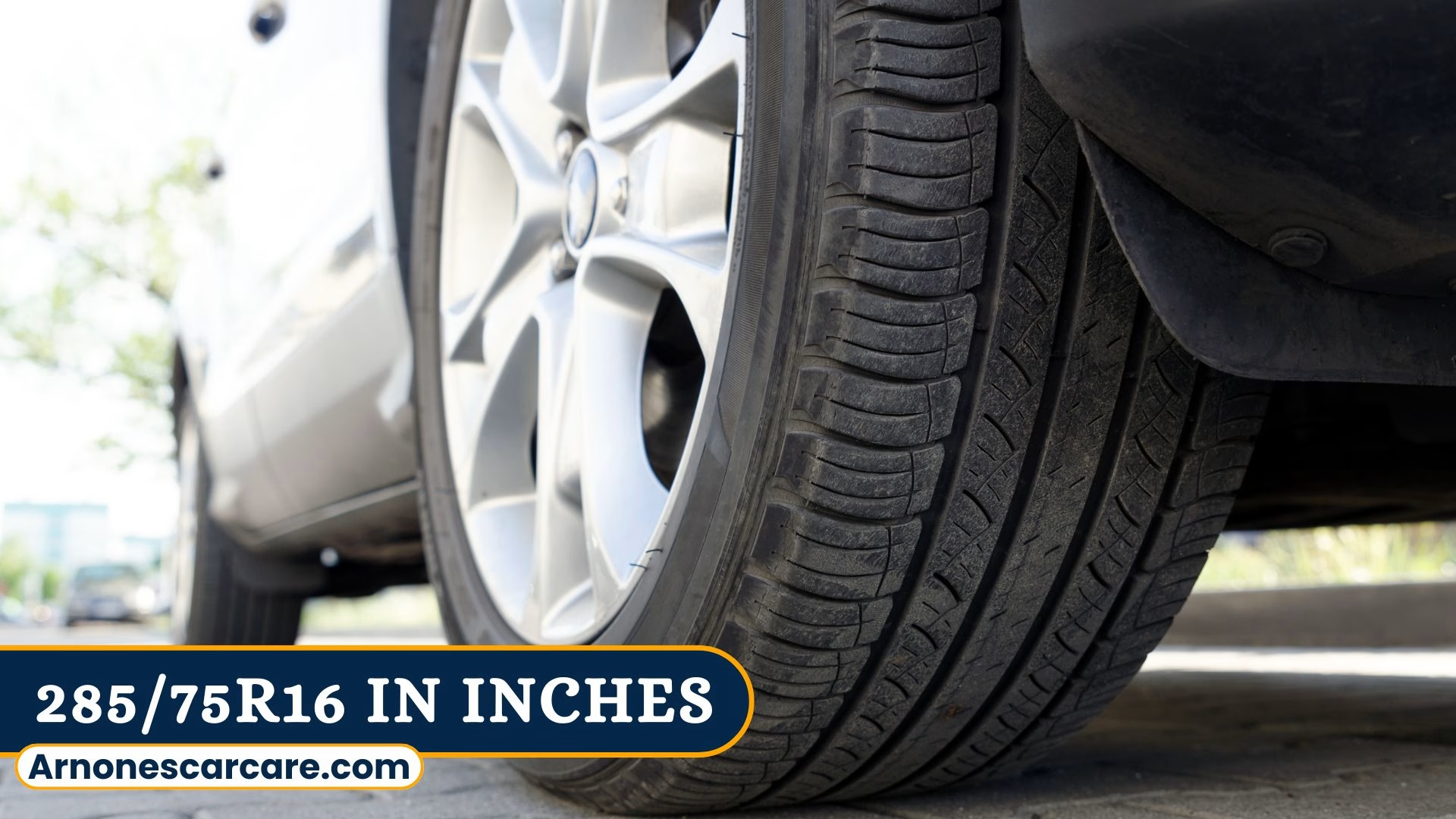
When it comes to selecting the right tire for your vehicle, the 285/75R16 tire size stands out as a popular choice for trucks, SUVs, and vans. With its robust design and versatile capabilities, it offers an excellent balance between on-road performance and off-road traction.
The 285/75R16 tires provide an 11.2-inch width and a 32.8-inch overall diameter, making them ideal for vehicles that require added ground clearance and stability, whether you’re tackling rugged terrains or cruising on highways. These tires feature a 75% aspect ratio, giving them a sidewall height of approximately 8.4 inches.
The radial construction (indicated by the “R”) ensures durability and smooth handling, while the 16-inch wheel diameter ensures compatibility with a wide range of vehicles. In this comprehensive guide, we’ll explore the key dimensions, benefits, performance factors, and popular tire options for the 285/75R16 tire size, helping you make an informed decision for your vehicle. Check out my blog for helpful guides on various tire sizes to ensure you make an informed purchase decision.
Breaking Down 285/75R16: What Do These Numbers Mean?
The 285/75R16 is a tire size that provides crucial information about the tire’s width, aspect ratio, construction type, and compatibility with the wheel. Here’s what each component represents:

- 285: This number signifies the tire’s width in millimeters. For the 285/75R16 tire, it means the tire is 285 millimeters wide, or about 11.2 inches.
- 75: This is the aspect ratio, which represents the height of the tire’s sidewall as a percentage of its width. In this case, the sidewall height is 75% of the tire’s width, which equals about 8.4 inches.
- R: The R indicates that the tire is radial in construction. Radial tires are the most common type of tire, where the layers of tread and body cords run radially (from bead to bead) at a 90-degree angle to the direction of travel.
- 16: This is the diameter of the wheel that the tire is designed to fit. In this case, the tire is made for 16-inch wheels.
This combination of numbers and letters provides all the necessary details to select the correct tire for your vehicle, ensuring a perfect fit and performance.
Dimensions of 285/75R16 to Inches and Millimeters
The dimensions of a 285/75R16 tire are crucial for understanding how it will perform on your vehicle. Here’s a breakdown of the key dimensions:
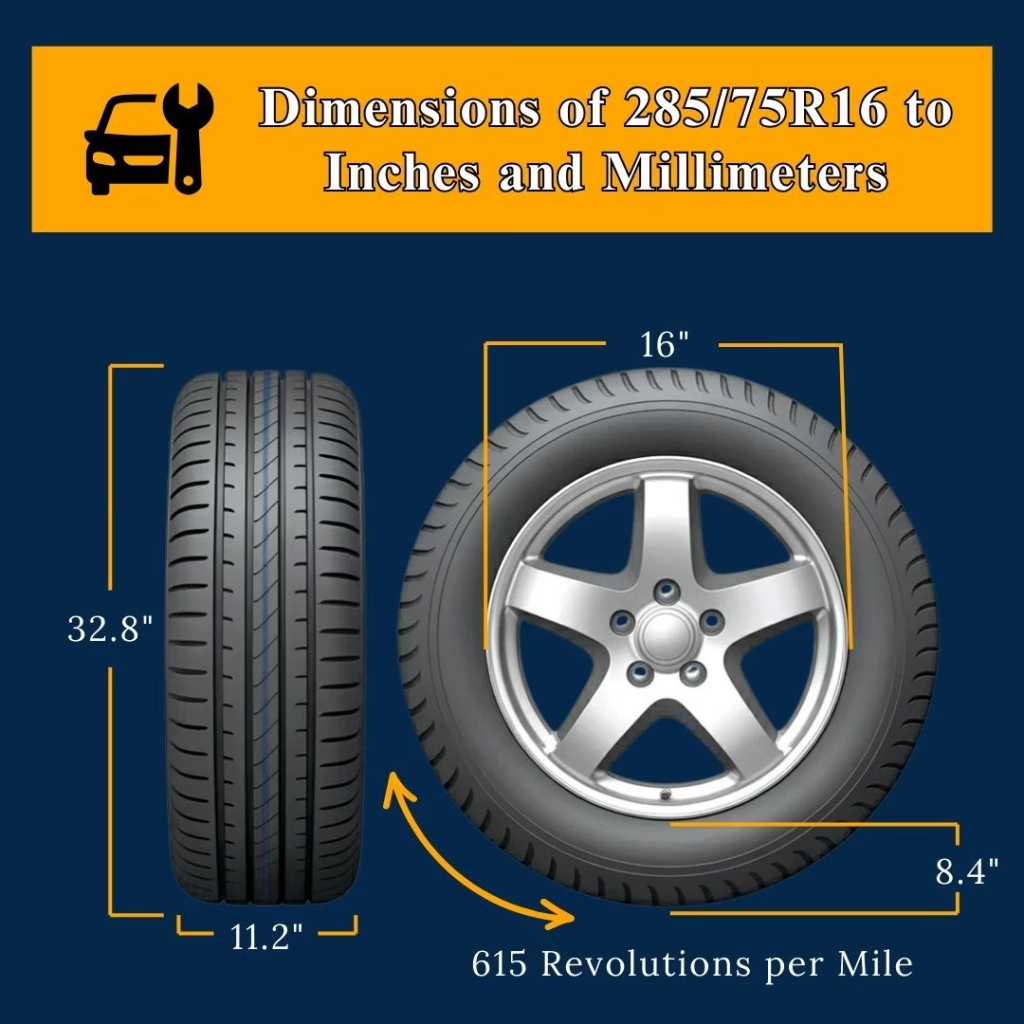
| Dimension | Measurement (Inches) | Measurement (Millimeters) |
| Sidewall Height | 8.4″ | 214 mm |
| Circumference | 103″ | 2618.8 mm |
| Wheel Diameter | 16″ | 406.4 mm |
| Diameter (Overall) | 32.8″ | 834 mm |
| Width | 11.2″ | 285 mm |
| Revolutions per Mile | 615 per mile | 382 per km |
How Does These Dimensions Affect Performance?
The larger diameter of 32.8 inches helps provide better ground clearance, ideal for off-road vehicles. The width of 11.2 inches provides a stable footprint, enhancing the vehicle’s traction. Additionally, the sidewall height plays a role in absorbing impacts, ensuring a smoother ride, especially on uneven terrains.
How to Convert 285/75R16 Tire Size into Inches?
Converting the 285/75R16 tire size into inches is straightforward. Here’s how it’s done:
- Width: The number 285 refers to the width in millimeters. To convert this to inches, divide 285 by 25.4 (since 1 inch = 25.4 mm). This results in approximately 11.2 inches.
- Aspect Ratio: The aspect ratio 75 means the sidewall height is 75% of the tire’s width. So, multiplying 11.2 inches by 0.75 gives you a sidewall height of approximately 8.4 inches.
- Wheel Diameter: The wheel diameter remains the same at 16 inches.
Therefore, the 285/75R16 tire size can be summarized as 11.2 inches wide, 8.4 inches tall, and fits a 16-inch wheel rim.
Expected Lifespan of 285/75R16 Tires: What You Should Know
The lifespan of 285/75R16 tires depends on factors like the type of tire, how well you maintain it, and the driving conditions. On average, with proper care, these tires can last anywhere from 40,000 to 60,000 miles or even more.
For example, a highway all-season tire like the Toyo Open Country H/T is often expected to last around 50,000 miles. On the other hand, a more rugged tire designed for all-terrain driving, such as the General Grabber A/TX, offers a longer lifespan—up to 60,000 miles for passenger sizes, and about 50,000 miles for light truck versions. Proper maintenance, like keeping the correct air pressure and regular tire rotations, can help maximize the tire’s lifespan.
285/75R16 Tire Revolutions Per Mile
The revolutions per mile (RPM) of a tire, such as the 285/75R16, refers to how many full rotations the tire makes in one mile of travel. For this specific tire, it makes about 615 revolutions per mile (or about 382 revolutions per kilometer).
Why Does It Matter?
- Fuel Economy:
- The RPM affects the engine’s efficiency. Tires with fewer revolutions per mile (larger tires) reduce the number of times the engine has to work to move the vehicle. This often leads to improved fuel economy since the vehicle needs less effort to maintain speed.
- The RPM affects the engine’s efficiency. Tires with fewer revolutions per mile (larger tires) reduce the number of times the engine has to work to move the vehicle. This often leads to improved fuel economy since the vehicle needs less effort to maintain speed.
- Vehicle Speed:
- The RPM is linked to how fast your vehicle moves. A tire that has a higher RPM will make more rotations per mile, meaning the vehicle will cover less distance with each tire rotation. Therefore, the speedometer reading can vary based on tire size, and larger tires can sometimes make the vehicle feel like it’s traveling slower than indicated.
- The RPM is linked to how fast your vehicle moves. A tire that has a higher RPM will make more rotations per mile, meaning the vehicle will cover less distance with each tire rotation. Therefore, the speedometer reading can vary based on tire size, and larger tires can sometimes make the vehicle feel like it’s traveling slower than indicated.
- Tire Wear:
- Tires with lower RPM tend to wear more evenly because the tread is in contact with the road for fewer rotations. On the other hand, tires with higher RPM might experience faster wear due to the increased number of rotations.
- Tires with lower RPM tend to wear more evenly because the tread is in contact with the road for fewer rotations. On the other hand, tires with higher RPM might experience faster wear due to the increased number of rotations.
In summary, the RPM of the 285/75R16 tire is an important factor in fuel efficiency, speed measurement, and tire longevity. A lower RPM typically offers better fuel economy and reduces tire wear, making it a critical consideration when selecting tires.
Load Capacity and Inflation for 285/75R16 Tires
Load Capacity: The 285/75R16 tire can carry a maximum load depending on the load index, typically ranging from 2,755 lbs (1,250 kg) to 3,750 lbs (1,700 kg) per tire. The load capacity is crucial for vehicles carrying heavy loads or towing. Exceeding this limit can lead to safety issues like tire damage or blowouts.
Inflation Pressure: The recommended inflation for 285/75R16 tires is typically between 50-80 PSI, with most vehicles requiring 65 PSI for standard use. Proper inflation is key to:
- Safety: Prevents tire blowouts and uneven wear.
- Fuel Economy: Correct pressure reduces rolling resistance, improving gas mileage.
- Tire Longevity: Ensures even wear, extending tire life.
Effects of Incorrect Inflation:
Maintaining the correct tire pressure is crucial for optimal vehicle performance. Here’s how incorrect inflation can affect your tires:
- Underinflation leads to increased wear, poor fuel efficiency, and potential tire failure.
- Overinflation causes uneven wear and reduced traction, especially on rough surfaces.
Regularly checking tire pressure and adjusting for load ensures safe, efficient, and long-lasting tire performance.

Benefits of 285/75R16 Tires
Choosing 285/75R16 tires offers several benefits, especially for vehicles designed for rugged terrains:
- Improved Off-Road Performance: The larger diameter and wider width help increase traction, which is essential for off-roading and heavy-duty use.
- Better Handling: The wider footprint ensures more tire contact with the road or terrain, leading to improved stability and handling.
- Enhanced Durability: The thicker sidewall provides added protection against bumps and impacts, increasing the tire’s longevity.
- Versatility: These tires are suitable for various vehicles, including trucks, SUVs, and vans, making them a versatile choice for many types of vehicles.
Comparison of 285/75R16 with Other Tire Sizes: Which One is Right for You?
Choosing the right tire size depends on factors like performance, fuel efficiency, and ride comfort. Let’s compare 285/75R16 with other similar tire sizes to help you decide which is best for your needs.
285/75R16 vs. 265/75R16
- Key Difference → The 265/75R16 is a bit narrower than the 285/75R16, resulting in slightly better fuel efficiency and a smoother ride.
- Best Choice For → If you’re looking for a more fuel-efficient tire that provides a quiet and comfortable highway ride, the 265/75R16 is ideal.
285/75R16 vs. 305/70R16
- Key Difference → The 305/70R16 is wider and has a slightly taller sidewall, providing better off-road performance and traction.
- Best Choice For → If you need extra grip for off-road driving or you’re frequently tackling rugged terrains, the 305/70R16 is the better choice.
285/75R16 vs. 235/75R16
- Key Difference → The 235/75R16 is a narrower tire, which helps with better fuel efficiency and lighter handling.
- Best Choice For → If you drive mostly on city streets or highways and want to maximize fuel efficiency, the 235/75R16 will be a good fit.
Comparison Table for Easy Understanding
| Tire Size | Width (inches) | Aspect Ratio | Sidewall Height (inches) | Best Use |
| 285/75R16 | 11.2″ | 75% | 8.4″ | Off-road and highway balance |
| 265/75R16 | 10.4″ | 75% | 7.8″ | Fuel efficiency & smoother ride |
| 305/70R16 | 12.0″ | 70% | 8.4″ | Off-road performance & traction |
| 235/75R16 | 9.25″ | 75% | 7.0″ | Highway use & fuel efficiency |
Which Tire Size Should You Choose?
- For off-road grip → Go for 305/70R16.
- For better fuel efficiency and a smoother highway ride → Choose 235/75R16.
- For a balance of off-road capability and highway comfort → 285/75R16 is the ideal choice.
By comparing these tire sizes, you can choose the one that best suits your driving needs, whether you’re focused on fuel economy, off-road performance, or a mix of both.
How to Choose the Right 285/75R16 Tire?
Selecting the right 285/75R16 tire depends on several factors that influence your vehicle’s performance, safety, and comfort. Here’s how to make the best choice:
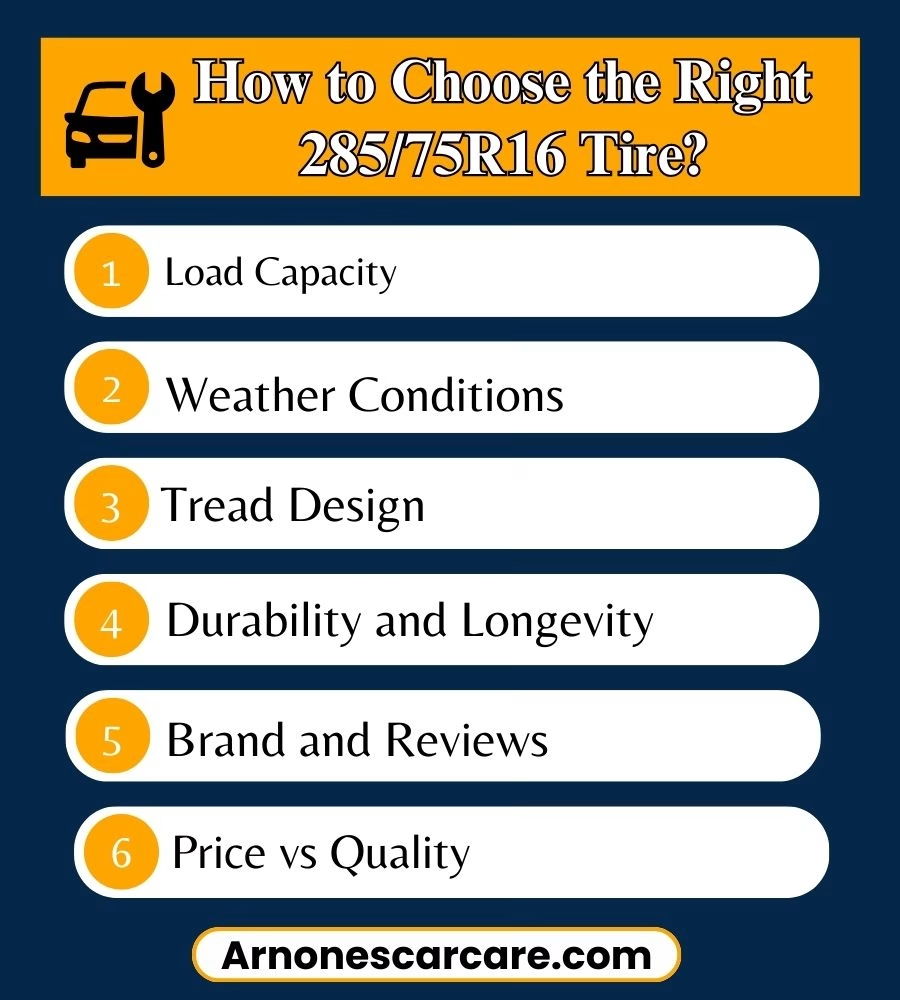
1. Load Capacity
- Make sure the tire’s load index matches or exceeds the weight your vehicle will carry. Check the load capacity printed on the tire sidewall and compare it with your vehicle’s requirements.
2. Weather Conditions
- All-season tires are great for everyday use and mild weather conditions. If you live in an area with extreme conditions (snow, rain, or mud), consider all-terrain or mud-terrain tires for better traction and safety.
3. Tread Design
- The tread pattern plays a crucial role in grip. A chunky, deep tread is ideal for off-roading, while a more uniform tread provides a quieter ride and better fuel efficiency for road use.
4. Durability and Longevity
- Look for tires with reinforced sidewalls if you’re carrying heavy loads regularly. Choose tires with longer tread life if you’re planning to use them for extended periods to save on replacement costs.
5. Brand and Reviews
- Choose well-known, reputable tire brands with positive user feedback. Online reviews can give insights into tire performance, durability, and comfort.
6. Price vs Quality
- While price matters, ensure you’re not compromising on quality. Invest in a tire that balances performance, safety, and value for money.
By considering these factors, you can choose the best 285/75R16 tire for your specific driving needs. Always refer to your vehicle’s manual for guidance on tire specifications.
Popular 285/75R16 Tires in the Market
Here are some of the most popular and highly recommended 285/75R16 tires currently available, catering to various driving needs—from aggressive off-roading to daily commuting:
| Tire Model | Type | Highlights | Price Range |
| BFGoodrich All-Terrain T/A KO2 | All-Terrain | Excellent off-road traction, durable sidewalls, 3PMSF-rated for winter use | ~$311/tire |
| Falken Wildpeak A/T4W | All-Terrain | Quiet on highways, strong wet traction, 50k-mile warranty | ~$312/tire |
| Cooper Discoverer ATP II | All-Terrain | Great value, solid performance on and off-road, 50k-mile warranty | ~$255/tire |
| General Grabber X3 | Mud-Terrain | Aggressive tread for mud and rocks, durable construction | ~$328/tire |
| Yokohama Geolandar M/T G003 | Mud-Terrain | Excellent off-road traction, good on-road comfort, 3PMSF-rated | ~$310/tire |
| Firestone Destination M/T2 | Mud-Terrain | Versatile performance, good balance between on-road comfort and off-road capability | ~$306/tire |
| Ironman All Country A/T | All-Terrain | Budget-friendly, 50k-mile warranty, solid all-terrain performance | ~$195/tire |
Common Replacement Tire Sizes for 285/75R16
If you’re considering upsizing or replacing your 285/75R16 tires, there are several alternative tire sizes that fall within a 3% variance of the original tire’s diameter, which is crucial for maintaining vehicle performance and safety. Here are some common replacements:
- 235/75R16: Diameter 31.9 inches
- 255/75R16: Diameter 32 inches
- 265/75R16: Diameter 32.7 inches
- 295/75R16: Diameter 33.4 inches
- 275/70R17: Diameter 32.2 inches
When replacing tires, it’s important to stay within the 3% diameter difference to maintain proper handling, speedometer accuracy, and overall vehicle performance. Keep your vehicle in top condition with reliable tire repair services that will keep it running smoothly and safely.
Frequently Asked Questions (FAQs)
Q. How Tall is a 285/75R16 Tire?
A 285/75R16 tire has an overall height (diameter) of approximately 32.8 inches (834 mm). This measurement is essential for understanding how much ground clearance the tire will provide, which is important for off-road vehicles or trucks.
Q. How Wide is a 285/75R16 Tire?
The width of the 285/75R16 tire is approximately 11.2 inches (285 mm). The width affects vehicle handling, stability, and traction, making it suitable for larger vehicles and off-road conditions.
Q. What Type of Vehicle Uses a 285/75R16 Tire?
The 285/75R16 tire is typically used on trucks, SUVs, and vans that require a balance between off-road capabilities and on-road performance. It’s also a popular choice for vehicles that carry heavy loads or require added traction.
Q. Can I Replace 285/75R16 Tires with a Different Size?
Yes, you can replace 285/75R16 tires with other sizes that are within a 3% variance in diameter. This ensures that the new tires won’t adversely affect your vehicle’s performance, speedometer accuracy, and overall handling. Some common replacements include 235/75R16 and 265/75R16.

